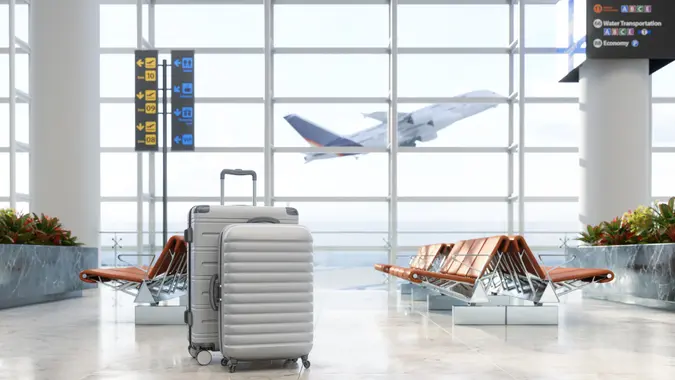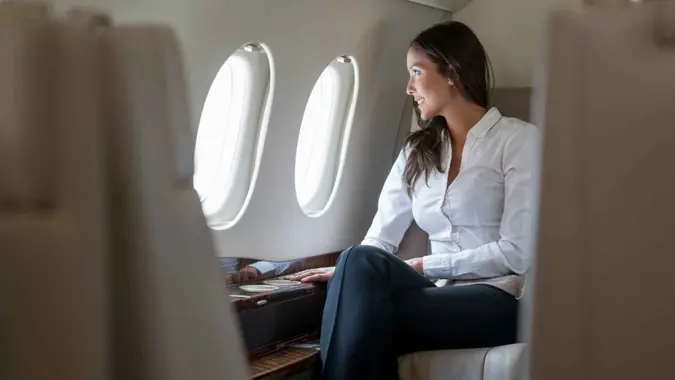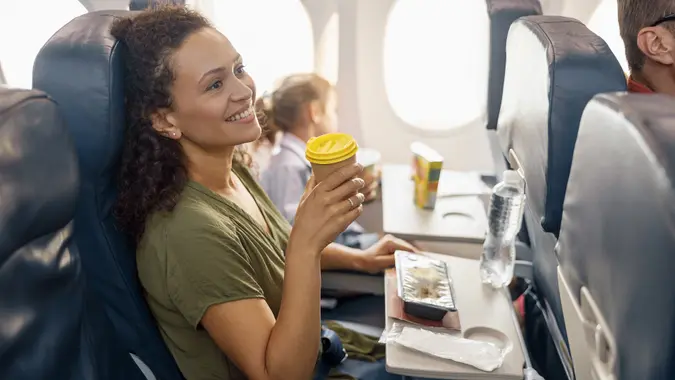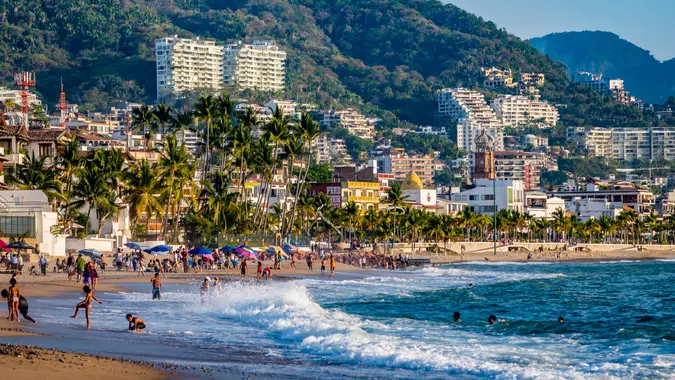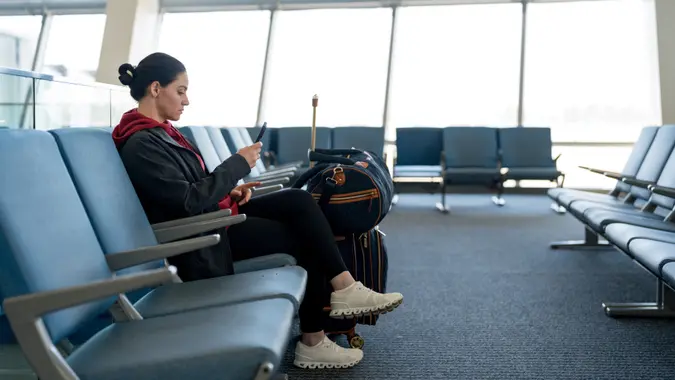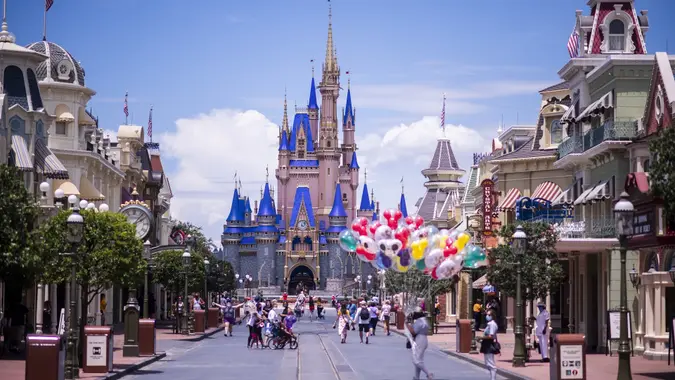4 US Airports With the Cheapest Flights — and 3 With the Most Expensive
Commitment to Our Readers
GOBankingRates' editorial team is committed to bringing you unbiased reviews and information. We use data-driven methodologies to evaluate financial products and services - our reviews and ratings are not influenced by advertisers. You can read more about our editorial guidelines and our products and services review methodology.

20 Years
Helping You Live Richer

Reviewed
by Experts

Trusted by
Millions of Readers
The amount you pay for flights can vary greatly depending on where you are flying to and from. Some airports offer cheaper fares than others on average, so it could be worth departing from or arriving to a slightly further airport for the savings this could provide.
A recent Points Path analysis found the cheapest and most expensive airports, so keep this in mind if you’re looking to book your next trip.
Most Expensive Airports
At all of these airports, average fares top $400:
- Washington Dulles (Washington) (IAD): $473 average fare
- John Wayne (Santa Ana, California) (SNA): $428 average fare
- San Francisco (San Francisco) (SFO): $425 average fare
Least Expensive Airports
If you’re looking for flights under $300, consider utilizing one of these airports:
- Fort Lauderdale (Fort Lauderdale, Florida) (FLL): $252 average fare
- San Juan (Carolina, Puerto Rico) (SJU): $266 average fare
- Orlando (Orlando, Florida) (MCO): $270 average fare
- Las Vegas (Las Vegas) (LAS): $275 average fare
How To Save on Flights When Flying Out of an Expensive Airport
Ideally, you would avoid high-cost airports by flying into alternate destinations, but this isn’t always possible. However, there are ways to save on flights even if you’re flying into a pricey airport.
“When you’re forced to fly in or out of a high-cost airport, flexibility is the name of the game,” said Julian Kheel, founder of Points Path.
Fly at Low-Demand Times and on Low-Demand Days
“If you’re willing to travel at lower demand times, such as early morning or late at night, you’re likely to find lower fares,” Kheel said. “You might also find cheaper tickets on days with less demand, which are often Wednesdays and Saturdays.”
Be Willing To Have a Layover
One of the factors that can drive prices at a certain airport up is if it is a hub for a major airline.
“High-cost airports are most often hubs dominated by a single carrier, such as Delta in Salt Lake City and Detroit, and United in San Francisco and Washington Dulles,” Kheel said. “The lack of flights from alternate airlines at these airports mean prices aren’t constrained by competition.”
However, there are usually a handful of flights from other airlines available — though they may not be as convenient.
“If you’re at a hub that’s dominated by a single carrier, look closely at fares from the small number of other airlines who compete at that airport,” Kheel said. “You’ll likely have to connect somewhere along the way if you’re flying on one of these airlines from a hub, but you’ve got a better chance at scoring a good deal.”
Use Price-Tracking Tools
Kheel also recommends using price-tracking tools to save money on airfare at high-cost airports.
“They’re especially useful nowadays since you can cancel and rebook most cash airfares without paying a penalty (basic economy fares are the main exception),” he said. “That means you can book a flight, then use a price tracker to continue monitoring the price of that flight even after you’ve paid for it. If the price drops, cancel and rebook your flight and get a credit or refund for the difference.”
Kheel recommends using the free price tracker in Google Flights.
“It’s simple, reliable and flexible,” he said. “Just do any search with Google Flights and pick a flight, then click the ‘track prices’ switch at the top of the booking page. Choose as many flights as you want, and you’ll get a tidy email each day showing the current cash price of every flight on your list.”
Book Far Enough in Advance
The longer you wait to book a flight, the more you’ll typically have to pay for airfare.
“Remember that as you get into the last 14 days before a flight departs, the prices in both cash and miles will tend to start rising,” Kheel said. “You’ll want to make sure you have a flight booked before it becomes more expensive than you’re able to afford.”
More From GOBankingRates
- Nearly 1 in 3 Americans Hit by a Costly Holiday Scam, Norton Survey Shows -- How To Avoid This
- Here's What the Average Social Security Payment Will Be in Winter 2025
- How Middle-Class Earners Are Quietly Becoming Millionaires -- and How You Can, Too
- The Easiest Way to Score $250 for Things You Already Do
 Written by
Written by  Edited by
Edited by 